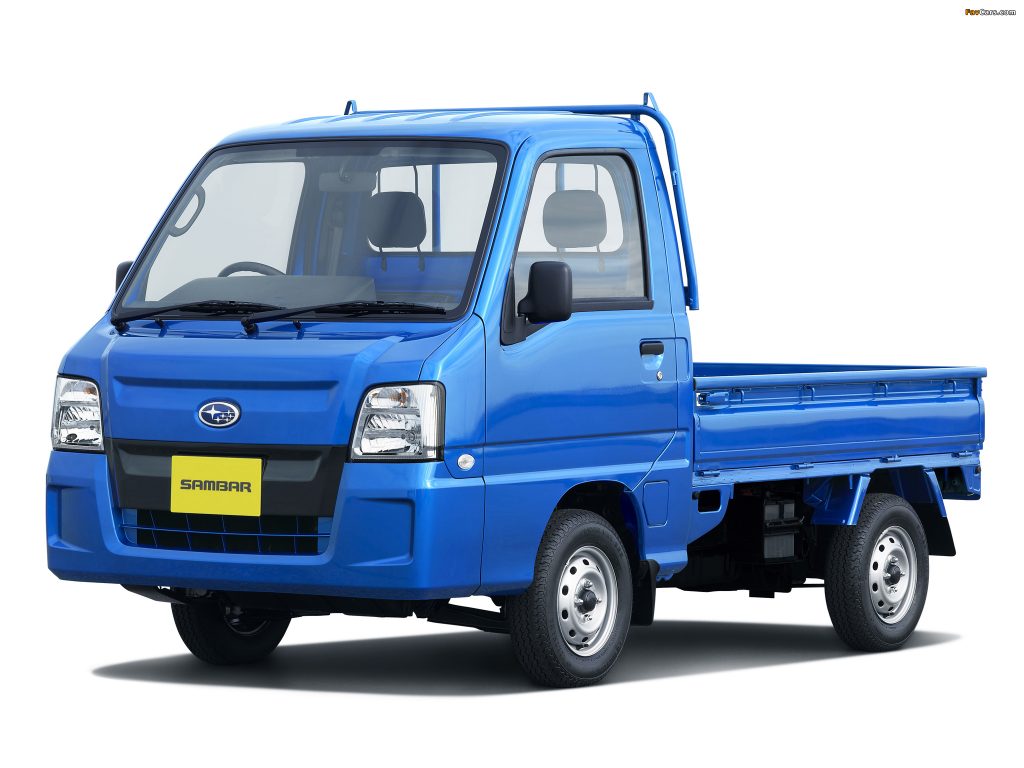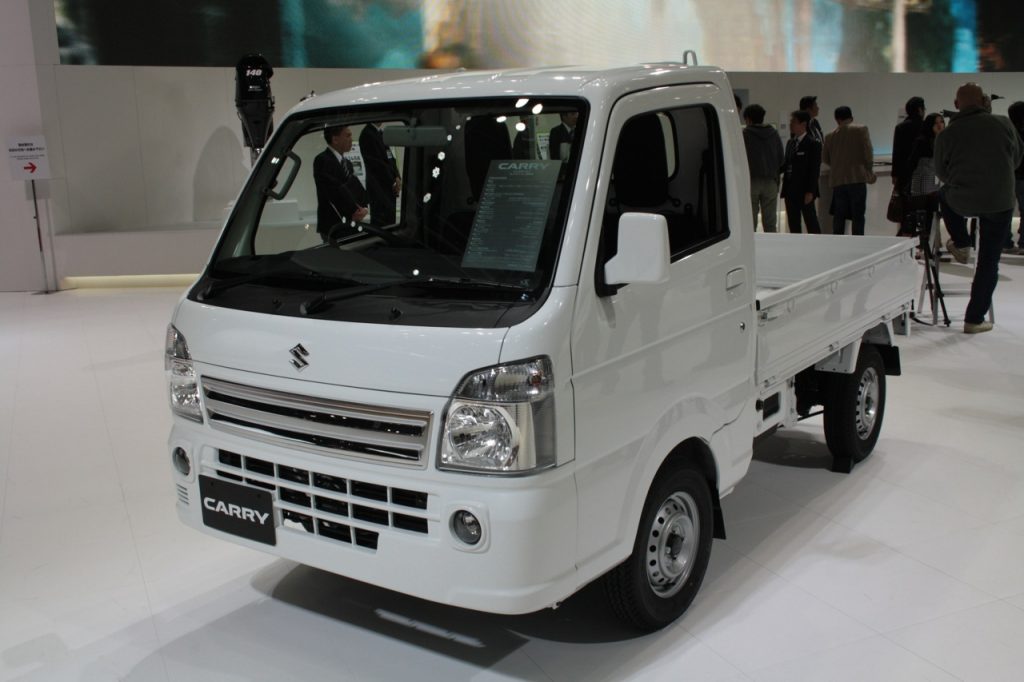Suzuki Carry vs. Daihatsu Hijet vs. Subaru Sambar
The Suzuki Carry, Daihatsu Hijet, and Subaru Sambar are known as being quality Kei Trucks. Each of the models has proven themselves to be a reliable truck, showcasing several generations spanning over the years. This raises the question of which is better. Is there a model which is best suited for the consumer? Are they all the same? This article will look at some of the key features of the Suzuki Carry, Daihatsu Hijet, and Subaru Sambar to help you decide which option is best for you.

Subaru Sambar’s experience
The Subaru Sambar is one of the oldest Kei Trucks on the market. Established in 1961. There have been six generations of the Subaru Sambar. This differs from other Kei trucks on the market. Many have undergone several generations. What does this mean for the truck? First, it shows that the company has focused on creating a Kei truck which can stand the test of time. Second, it proves that consumers are happy with what is produced (as there is no need to create a new generation to meet consumer demands).
Subaru Sambar – current features
The current models of the Subaru Sambar include a 3 speed auto transmission or a 5-speed manual transmission. There is also inter-cooling and a supercharger. Construction of the Subaru Sambar is different from most Kei trucks on the market as it is a 2 pc body. Most of the competitor trucks, such as the Suzuki Carry, are unibody. By having a two-piece body, the Subaru Sambar matches the chassis of most of the modern full-sized options on the road.
Both the unibody and the 2pc body have their advantages and disadvantages. Primarily, the 2pc body allows for easy bed customizations. The Unibody helps with the drive train. Depending upon the model that you choose and the features that you wish to have, the cabin could also be affected. Mainly this is based on the unibody or 2pc chassis. In the current model, the design is a remodeled Daihatsu. This lends to the question of whether it is better to just purchase a Daihatsu Hijet.
The Daihatsu Hijet’s experience
The Daihatsu Hijet has been around for several years. It has undergone several changes over those years. In comparison to the Subaru Sambar, the Daihatsu has 8 generations instead of 6. In many of these generations the engine and the basic functionality of the Kei Truck was addressed. Additionally, the market demands changed. The Daihatsu found itself needing to meet such a demand. Specifically, the Daihatsu had to update the engine to the 2-stroke, remove the business of the design, and redesign the cabin.
This is not to say that the Daihatsu Hijet is not a top quality Kei Truck. Rather, the brand focused more on meeting the current demands of the market over creating a truck that could withstand various shifts in the market. That being stated, there is a reason why the Subaru Sambar is a remodel of the Diahatsu Hijet. It is because it is a superior model to other Kei Trucks on the market.
Daihatsu Hijet Current Model
The current model of Diahatsu Hijet is more in line with modern aesthetics and design. The cabin is offered in a high top. Dash options have been updated. The engine, as with most of the generations of this model, has been updated. Its equipped with a turbo engine, giving more power. Alongside the boost to power is a focus on the safety features and performance of the Diahatsu. Sensors have been added to the model to help with breaking.
Compared to the Subaru Sambar and the Suzuki Carry, it is one of less popular models. The overall design has become sleeker. However, there are still some boxy features. Some may find off-putting. Yet, if you need to have a good Kei truck for deliveries, agricultural use, or just for off-road use, the Daihatsu Hijet is a great option.

The Suzuki Carry
The most popular Kei on the market is the Suzuki carry. Celebrating 60 years of manufacturing, it has established itself as one of best Kei Trucks on the market. There are two options which are offered for the Suzuki Carry. These two are the Suzuki Carry (standard) and the Suzuki Super. With the super, you have more features such as collision detection, brake sensors, etc.
Suzuki Carry’s basic model includes a high cabin. Within there are several features within, such as the 40ᵒ and 20ᵒ chair laybacks. Also available are power windows, doors, and power steering. Depending upon the model and generation that you choose, you will have the option of either a 3 or 4 gear 5 speed shifting.
Which is better the Suzuki Carry, Daihatsu Hijet, or Subaru Sambar?
All the models discussed are worthy of purchase. It really depends upon your needs and expectations to determine which model is the best for you. If you just need a simple Kei truck for basic work and enjoyment, then the Daihatsu Hijet is the perfect choice. Those seeking customization to the cabin and more interior options may wish to purchase the Suzuki Carry or the Suzuki Super. These models have more modern interior and design features. Last, if you are seeking to have a model which can be converted into a dump bed or a scissor lift, or if you need superior loading and unloading on a flatbed, the Subaru Sambar may the best option.
Regardless of the model that you choose, you should check to see which features are available on the generation you desire. With each generation of the Suzuki Carry, Daihatsu, and Subaru Sambar have features not available on prior or post generations. When choosing your Kei Truck, it is strongly recommended that you check with your local and state importation authorities. Because there may be restrictions for on-road use for kei trucks under 25 years of age, a classic may be preferred. But with the quality and durability of the models, even an older Kei is a great choice.

